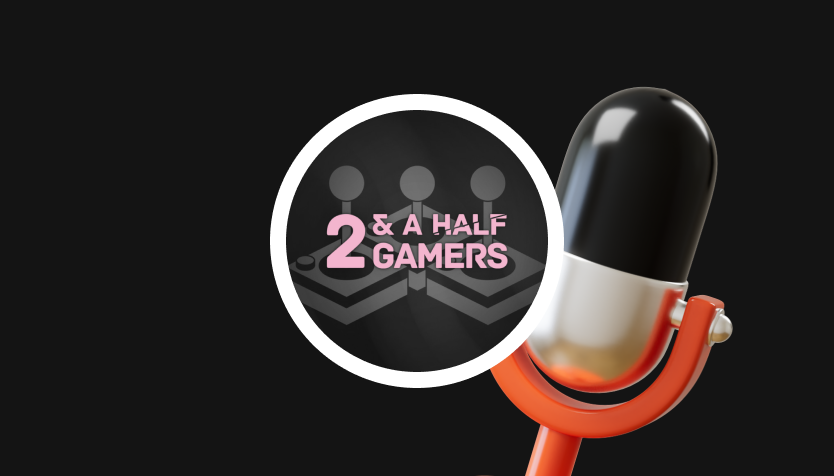In the world of hyper-casual game development, the main goal is earning a profit. But, as you know if you’ve ever launched a hyper-casual game - or tried to launch one - that’s usually easier said than done. This is where mobile game publishers can help.
Before agreeing to launch a game, publishers need to see that it meets certain marketability, retention, and monetization KPIs. Each part of the ‘holy triangle’ as Niv Touboul, Head of the In-house Games Team at Supersonic calls it, is necessary for unlocking maximum scale, revenue, and profit after the launch. Though most publishers will run these tests for you, it’s always a good idea to do your own due diligence and double check that your game holds up to the industry’s standards.
1. Reaching the lowest CPI in your marketability test as fast as possible
The first part of the holy triangle is marketability. Marketability testing is the most important way to prove that the time and effort you’re going to put into building a game is worth it - checking the following important questions before investing time into further developing the game, like:
- Are people interested in my idea?
- Is there a big market for my game?
- Will I get enough downloads to sustain a business in scale?
Getting a resounding ‘yes’ to all these questions signals to publishers that your game has enough value to move to the next step, retention. Additionally, marketability testing is a helpful learning tool to see what part of your game concept is resonating with people, what needs work, and other insights that can inform future projects.
Usually, marketability testing starts with a campaign on a social ad network like Facebook, with CPI as the most important performance metric. For hyper-casual games, LTV is often limited and revenue and margins are usually smaller, so a low CPI is needed to generate profit and achieve larger scale. Publishers often have different CPI goals for marketability testing, but Supersonic’s is a CPI under $0.35.
You can even submit your game for testing using Supersonic’s self-serve marketability testing platform by filling out the questionnaire on our site. After approving your game, we’ll start running the marketability test immediately and then will reach out after with the results so you know how your game concept performed.

Keep these tips for success in mind for the first corner of the holy triangle:
- Run the marketability test quickly and early. Getting through this stage sooner rather than later will either let you move to the following retention step or tell you to scrap the game and go back to the drawing board. Remember the 80/20 rule here: In 20% of your time, you can make changes that affect 80% of your business. On the other hand, you can spend 80% of your time making changes that affect only 20% of the business. It’s best to make the adjustments that take the least amount of your time but lead to the lowest CPI.
- Show off the best parts of your game and gameplay in your creative. If your boss level is, well, boss, use it as the creative for your Facebook campaign. You don’t need a ton of content at this stage - the first three seconds are the most important. Just show the most compelling parts of your game that highlight the simplicity of the gameplay - hyper-casual games should be clear and easy to understand.
Yummy Games hit the ground running with the marketability test of their game, Samurai Flash, thanks to the help of Supersonic. They worked together for two weeks to improve the prototype, and when they launched the initial marketability test to measure the product-market fit, the ad creative earned an impressive $0.22 CPI (cost per install).
2. Improving the game to increase retention
In the second part of the triangle - retention - publishers suggest game tweaks and design improvements to try and boost retention and prove the game has staying power. Additionally, this is where you apply the lessons learned from the marketability tests, which show you how people engaged, and can provide insights into what people liked about your game.
Publishers often focus on playtime, Day 1 retention, and Day 7 retention as the KPIs for this stage. Like CPI in the marketability stage, these metrics help predict how profitable a hyper-casual game will be after launch. Supersonic generally aims for the following retention KPIs:
- Day 1 retention: 40-50%
- Day 7 retention: 10-15%
- Playtime: 500-1000 seconds
Publishers can help you achieve these KPIs by offering expertise and resources in the form of design input and assets. Supersonic, for example, has a dedicated game design team that helps developers with game improvements and results in a direct impact on retention. Just take the case of Gabriel Coriuu of Seenax and his game Hide N’ Seek - partnering with Supersonic on game tweaks like making the characters move slower, adding menus and simplifying the UI, and reducing the size of the vision field led to a 48% increase in retention and 33% increase in playtime.

3. Maximizing profit through monetization
By the third and final stage of the holy triangle - monetization - you’re probably already on board with a publisher. Now, it’s important to know what to expect and how publishers will optimize your monetization strategy.
During the monetization stage, the goal is to increase your LTV and start earning a profit. The first way to do that is to make updates to the product. This could include implementing rewarded video in strategic places, adding skins, or integrating in-app purchases. Publishers can help here by offering their recommendations for optimized placements, enhanced creative, and game tweaks.
When Gemo worked with Supersonic on their game Sort It 3D, they reached the top of the charts by making updates to the game, including adding rewarded video placements, creating an interactive instead of static tutorial, and adding collectibles - including skins. With all of these tweaks, the team improved LTV, increased playtime, and scaled their game: “After all this, playtime increased 20% and LTV increased 30% - which is even more impressive considering how much higher our scale had gotten. Now a month after launch, the game reached number 1 in the US - showing no signs of slowing down.”
The second way to achieve ARPU goals is through better waterfall management. Adding new demand sources, optimizing bids, and managing the waterfall setup are all part of this. For example, after Supersonic started managing and optimizing the waterfall for Bead Sort, LTV increased 20%.
Publishers have the growth expertise needed to handle and scale your monetization strategy and save you valuable time so you can focus on other parts of the operation. When working with Supersonic, Coriuu speaks to this type of support: “I’ve never specialized in and I’ve never tried to understand monetization. I’ve always relied on the publisher to handle the monetization side … I kind of relied on Supersonic.”
Publishing is a process
Any game developer can benefit from working with a publisher. What every game developer should keep in mind, though, as Tomer Geller, Lead Game Designer for Supersonic describes it, is that passing each stage of the holy triangle - marketability, retention, and monetization - is a process. In rare cases, you can go from marketability testing to launch in a matter of weeks. However, it’s more likely the case that optimizing your game and monetization strategy takes months.
Your patience can pay off, though. Take the examples of Fogwatt Games, Seenax, and Yummy Games seen here. They all achieved top spots in the charts, boosted their LTV and retention, and generated great profit when they partnered with Supersonic to publish their games.
Let's put these tips to good use
Publish your game with Supersonic



